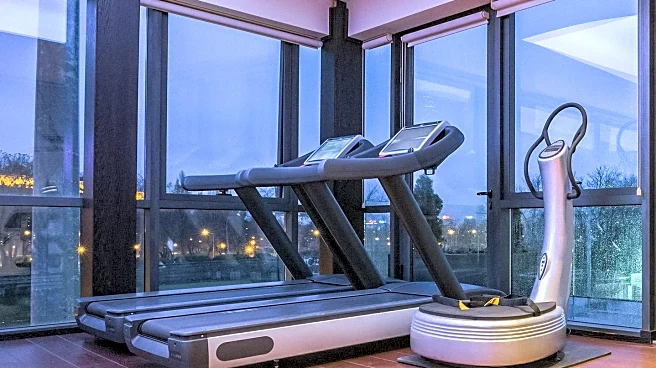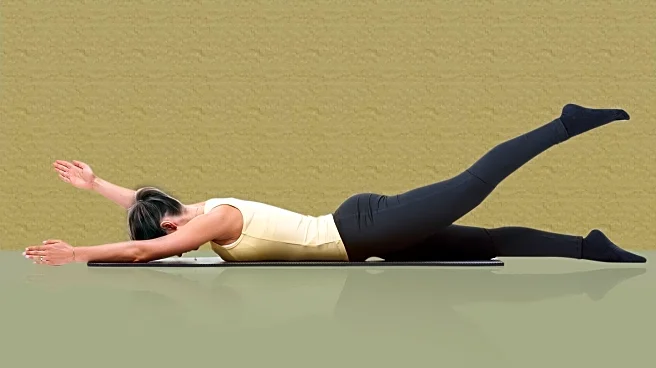What is the story about?
What's Happening?
Fitness coach Jacqueline Hooton emphasizes the importance of weight-bearing exercises, particularly jumping, to combat the decline in bone density that occurs after the age of 30 and accelerates post-menopause. According to Hooton, jumping exercises stimulate osteoblasts, the cells responsible for bone formation, thereby increasing bone density and strength. A study referenced by sports medicine specialist Jocelyn Wittstein demonstrated a 1% increase in hip bone mineral density among postmenopausal women who performed 30 jumps three times a week over six months. The workout involves drop jumps from a height of 8 inches followed by rebound jumps, with the ground force reaction (GFR) equating to 3-5 times the individual's body weight. Alternatives such as heel drops and walking are suggested for those unable to perform jumps, providing lower GFR but still benefiting bone health.
Why It's Important?
The decline in bone density post-menopause poses significant health risks, including increased susceptibility to fractures and osteoporosis. By incorporating jump training into fitness routines, postmenopausal women can potentially mitigate these risks, enhancing their overall health and mobility. The study's findings underscore the effectiveness of targeted exercises in promoting bone health, offering a practical solution for maintaining bone density. This approach not only benefits individual health but also has broader implications for public health strategies aimed at reducing healthcare costs associated with bone-related conditions in aging populations.
What's Next?
As awareness of the benefits of jump training grows, fitness programs and public health initiatives may increasingly incorporate these exercises into recommendations for postmenopausal women. Further research could explore the long-term effects of such routines on bone health and their potential to prevent osteoporosis. Fitness professionals and healthcare providers might collaborate to develop tailored exercise plans that accommodate varying physical capabilities, ensuring accessibility and safety for all individuals.
Beyond the Headlines
The emphasis on jump training highlights a shift towards proactive health management, encouraging individuals to take control of their physical well-being through targeted exercise. This approach aligns with broader trends in preventive healthcare, where lifestyle modifications are increasingly recognized as crucial components of disease prevention and health maintenance. The study also raises ethical considerations regarding the accessibility of fitness resources and the need for inclusive programs that cater to diverse populations.
AI Generated Content
Do you find this article useful?













